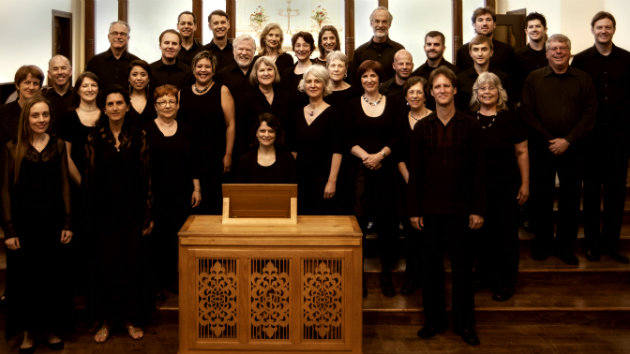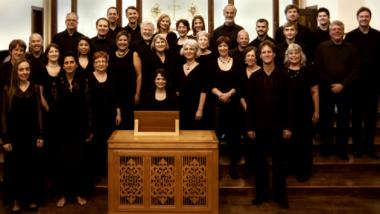
The California Bach Society’s focus long ago shifted from exclusively programming Bach’s music to including repertoire from the musical treasure trove that is the Renaissance and Baroque period, but the ensemble also occasionally ventures into more modern musical times. Such was the case during last weekend’s season-ending concerts in San Francisco, Palo Alto, and Berkeley, titled “An Italian Lineage.”
The performance included music by 16th- and 17th-century Italian composers such as Giacomo Carissimi, Domenico Scarlatti, and Rossino Mantovano, but also from some of their musical successors who lived into the 20th century: Giuseppe Verdi (died 1901), Ildebrando Pizzetti, and Mario Castelnuovo-Tedesco (both died 1968). That resulted in an intriguing, for the most part chronologically structured concert program that started the California Bach Society off on familiar baroque ground with the six-voice motet Veni sponsa Christi (“Come, bride of Christ”) by Carissimi (1605-1674).
This sprightly and concise concert opener set the tone for the evening. After a few moments of adjustment, the choir members found each other and settled into the acoustic setting of San Francisco’s St. Mark’s Lutheran Church to show their ability to create clear vocal lines and a choral sound that is cohesive yet transparent, warm, and expressive. The program and the singing were simply beautiful, although Friday night’s concert was plagued by some fluctuating intonation in the higher registers — intermittent, but more frequent than I can ignore.
Most remarkable was perhaps the inclusion of the Romancero Gitano (“The Gypsy Ballads”), a setting of poems from Spanish poet Federico García Lorca by composer Castelnuovo-Tedesco (1895-1968), which required the accompanying presence of the excellent guitarist Paul Psarras on a modern acoustic guitar. He also played theorbo and baroque guitar, while Andrew Dixon skillfully took care of the organ accompaniments for the evening. It is unfortunate that there is only a limited amount of repertoire for choir and guitar available, because it is a lovely and enchanting combination. Romancero Gitano made that abundantly clear with its dramatic musical imagery...
It is unfortunate that there is only a limited amount of repertoire for choir and guitar available, because it is a lovely and enchanting combination. Romancero Gitano made that abundantly clear with its dramatic musical imagery, inspired by Lorca’s passionate poetry on the eternal questions of love, life, and death.
My personal favorites of the evening, however, were the hymn “Iste Confessor” in Scarlatti’s Messa Breve ‘La Stella’ before intermission, and the elegant Messa di Requiem from 1922-1923 by composer Ildebrando Pizzetti (1880-1968), with its undulating harmonies and the most fragile setting of the words Kyrie Eleison (Lord have mercy) imaginable.
In the immediately following Dies Irae the composer initially uses the original Gregorian melody as a literal quote, but as the piece progresses he gradually lets it dissolve until it lingers as only a faint memory and the music has lost its grimness. I hope that Paul Flight and his singers can find a way to perform the entire Requiem at some point in the future, including the Sanctus, Agnus Dei and Libera Me; what they did with Pizzetti’s captivating composition was quite remarkable.

